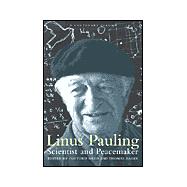A prodigy who became the youngest person elected to the National Academy of Sciences, Pauling was known for being outspoken and for leaping over scientific boundaries -- from physics to chemistry to biology to medical research. He wrote The Nature of the Chemical Bond, one of the most cited sources in scientific history, and won the Nobel Prize in Chemistry in 1954. He risked his reputation during the McCarthy years as a vocal opponent of Cold War policies and nuclear proliferation. As a result, he was vilified by the press, investigated by the FBI, and awarded the 1962 Nobel Peace Prize.
Pauling's larger-than-life personality was marked by what appear to be contradictions. Some observers found Pauling arrogant; many others loved him for his humor, humanity, and warmth. Observers likened him to the Pope, to a fascist, a wizard, and a king. He was a write-in candidate for go








